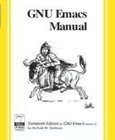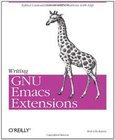Learning GNU Emacs
3rd Edition

Book Details:
| Publisher: | O'Reilly Media |
| Series: | OReilly , Learning |
| Author: | Debra Cameron |
| Edition: | 3 |
| ISBN-10: | 0596006489 |
| ISBN-13: | 9780596006488 |
| Pages: | 536 |
| Published: | Dec 20 2004 |
| Posted: | Nov 19 2014 |
| Language: | English |
| Book format: | CHM |
| Book size: | 5.39 MB |
Book Description:
GNU Emacs is the most popular and widespread of the Emacs family of editors. It is also the most powerful and flexible. Unlike all other text editors, GNU Emacs is a complete working environment--you can stay within Emacs all day without leaving. Learning GNU Emacs, 3rd Edition tells readers how to get started with the GNU Emacs editor. It is a thorough guide that will also "grow" with you: as you become more proficient, this book will help you learn how to use Emacs more effectively. It takes you from basic Emacs usage (simple text editing) to moderately complicated customization and programming.The third edition of Learning GNU Emacs describes Emacs 21.3 from the ground up, including new user interface features such as an icon-based toolbar and an interactive interface to Emacs customization. A new chapter details how to install and run Emacs on Mac OS X, Windows, and Linux, including tips for using Emacs effectively on those platforms.Learning GNU Emacs, third edition, covers:How to edit files with Emacs Using the operating system shell through Emacs How to use multiple buffers, windows, and frames Customizing Emacs interactively and through startup files Writing macros to circumvent repetitious tasks Emacs as a programming environment for Java, C++, and Perl, among others Using Emacs as an integrated development environment (IDE) Integrating Emacs with CVS, Subversion and other change control systems for projects with multiple developers Writing HTML, XHTML, and XML with Emacs The basics of Emacs Lisp The book is aimed at new Emacs users, whether or not they are programmers. Also useful for readers switching from other Emacs implementations to GNU Emacs.
Download Link:
Related Books:
Gnu Emacs Manual
For Version 22
16th Edition
GNU Emacs is much more than a word processor; over the years it has expanded into and entire workflow environment. Programmers are impressed by its integrated debugging and project management features. Emacs is also a multi-lingual word processor, can handle all your email and Usenet news needs, display web pages, and even has a diary and a calendar for your appointments. When you tire of all the work you can accomplish with it, Emacs contains games to play. Features include: * Special editing modes for 25 programming languages including Java, Perl, C, C++, Objective C, Fortran, Lisp, Scheme, and Pascal. * Special scripting language modes for Bash, oth...
GNU Emacs
Pocket Reference
GNU Emacs is the most popular and widespread of the Emacs family of editors. It is also the most powerful and flexible. Unlike all other text editors, GNU Emacs is a complete working environment -- you can stay within Emacs all day without leaving. The GNU Emacs Pocket Reference is a companion volume to O'Reilly's Learning GNU Emacs, which tells you how to get started with the GNU Emacs editor and, as you become more proficient, it will help you learn how to use Emacs more effectively.This small book, covering Emacs version 20, is a handy reference guide to the basic elements of this powerful editor, presenting the Emacs commands in an easy-to-use tabular format....
Writing GNU Emacs Extensions
Yes, it is possible to be all things to all people, if you're talking about the Emacs editor. As a user, you can make any kind of customization you want, from choosing the keystrokes that invoke your favorite commands to creating a whole new work environment that looks like nothing ever developed before. It's all in Emacs Lisp -- and in this short but fast-paced book.GNU Emacs is more than an editor; it's a programming environment, a communications package, and many other things. To provide such a broad range of functions, it offers a full version of the Lisp programming language -- something much more powerful than the little macro languages provided in other editors (including older versions of Emacs). GNU Emacs is a framework in which you can crea...
2007 - 2021 © eBooks-IT.org



